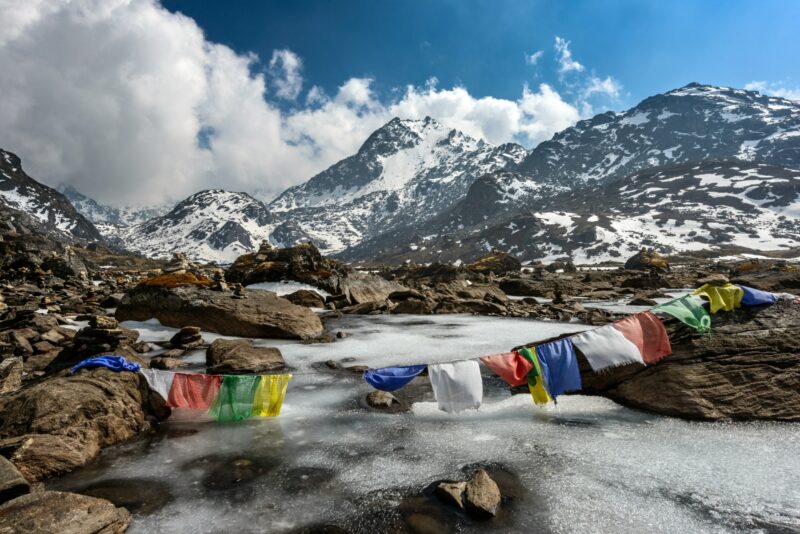The road to COP28: climate action priorities in South Asia
| 6 Apr 2023 | |
| 09:00 - 10:30 | |
| Webinar |
Share

The recent IPCC report describes South Asia as one of the global hotspots of human vulnerability. The region also has a lot of potential for a low-carbon transformation. This online event brings together high-level speakers to discuss solutions and climate action priorities for the region in the lead up to COP28.
Chair
Kunda Dixit, Editor, Nepali Times
Opening remarks by Manjeet Dhakal, Director of Climate Analytics South Asia
Speakers
- Dr Bimala Rai Poudyal, MP, Nepal
- Hon Saber Chowdhury, MP, Bangladesh
- Shafqat Kakakhel, Ambassador, Pakistan
- Dr Deepshikha Sharma, ICIMOD
Watch the event recording
Summary of discussion
Switching to renewables
South Asian nations have made significant strides in addressing climate change through their efforts to promote renewable energy. India is implementing initiatives like the Jawaharlal Nehru National Solar Mission and a large-scale renewable energy expansion programme implemented by the Solar Energy Corporation of India (SECI), aiming for 450 GW of renewable energy capacity by 2030. The National Wind-Solar Hybrid Policy and financial incentives attract private investment in hybrid projects.
In Bangladesh, the focus is on expanding renewable energy access in rural areas with solar home systems and the Solar Irrigation Pump Program, complemented by net metering regulations and coastal wind power projects. Pakistan’s Alternative Energy Development Board facilitates projects, while feed-in tariffs and the Renewable Energy Policy drive renewable energy integration. Sri Lanka’s “Soorya Bala Sangramaya” programme prioritises solar power aiming 1000 MW of solar electricity to the national grid by 2025 and 1500 MW by 2030, and diverse sources like wind, biomass, and biogas further diversify the energy mix. Nepal, alongside these efforts, has achieved notable progress by promoting renewable energy through subsidies, small-scale hydropower, solar home systems, and a shift towards electric stoves.
Building resilience
Across South Asia, there are distinct adaptation and resilience needs, particularly in coastal and mountainous areas. Coastal regions are confronted with rising sea levels, more frequent extreme weather events, and coastal erosion, necessitating protective measures, resilient infrastructure, and sustainable coastal zone management practices. Mountainous areas grapple with the impacts of melting glaciers, shifting precipitation patterns, and the risks of landslides and flash floods. To enhance resilience, early warning systems, climate-resilient agriculture, and nature-based solutions are crucial. Capacity building, knowledge sharing, and collaboration are also needed to address the diverse adaptation needs stemming from the region’s geographical features and vulnerabilities. Vulnerable communities require climate-resilient agriculture, infrastructure, water management, coastal protection, and urban design investments.
Bimala Rai Poudyal highlights the potential of agro-ecological, biological, and ethnic diversity for climate research and adaptation. Integration of disaster risk reduction and climate change adaptation strategies is essential for efficient resource utilisation and cohesive efforts, as emphasised by Saber H. Chowdhury. Eco-friendly practices and harmonious coexistence with nature are vital. Bangladesh’s effective early warning systems and the Mujib Climate Prosperity Plan demonstrate the country’s commitment to transitioning from vulnerability to resilience and prosperity. Recognising the existential threat of global warming is crucial, added Chowdhury.
Investing in climate action
South Asia has recognised the need for substantial financial resources to address climate challenges. While India alone has pledged a significant investment of around USD 2.5 trillion in climate-related projects by 2030, the region’s actual receipt of climate finance, as reported in the GCF’s 2020 Annual Results Report, amounted to approximately USD 1.6 billion in approved funding for climate-related projects. To effectively combat the climate crisis, it is imperative for South Asian nations to prioritise obtaining reliable climate finance from developed countries and international financial institutions. The focus should be on funding projects that facilitate technology transfer and capacity building within the region.
Nepal, for example, has set an ambitious goal of achieving carbon neutrality by 2045 and emphasises the need for improved disaster preparedness and compensation mechanisms. Advocating for a more equitable distribution of resources, Dr. Bimala Rai Poudel emphasised the need for grants over loans or incentives. This approach would enable the region to access necessary financial support without adding to their debt burden. Furthermore, investments in climate projects have the potential to create green jobs, promoting sustainable economic growth and development. By prioritising renewable energy, sustainable agriculture, and climate-resilient infrastructure, South Asian countries can generate employment opportunities that contribute to climate action and socio-economic well-being.
Nature-based solutions
Ecosystem restoration, conservation, and sustainable resource management help combat climate change and enhance resilience. South Asian countries should prioritize nature-based solutions, such as restoring ecosystems, conserving forests and wetlands, and sustainable agriculture and fishing. Bimala Rai Poudyal highlighted Nepal’s focus on water conservation, renewable energy, and climate preparedness.
Pakistan, a vulnerable nation with rapid population growth and agriculture dependence, strives to mitigate climate impacts, protect ecosystems, and promote renewable energy. Saber H. Chowdhury emphasised the need for a global response to climate change, water scarcity, food insecurity, and biodiversity decline.
Role of non-state actors
Women, children, indigenous people, and the poor suffer most from climate change. South Asian nations should prioritise climate equity to protect the voices and rights of vulnerable groups. Gender-sensitive climate policies, social safety systems, and community climate action decision-making are examples. While Nepal has robust policy frameworks, more implementation and documentation are required. There are modest climate change solutions at the local level, but they are not yet scalable. Civil society is actively engaged in bringing the voices of mountain women to the IPCC and highlighting Nepal’s vulnerability and the support required.
Regional cooperation
Ambassador Kakakhel emphasises the potential for collaboration in renewable energy and disaster management and suggests revitalising existing institutions, such as SAARC, or leveraging those with a demonstrated track record, such as ICIMOD, which works with Hindu Kush-Himalayan nations. Cooperation is essential for devising solutions to transboundary pollution and establishing systems that are mutually advantageous. By exporting renewable energy to India and Bangladesh, Nepal has already demonstrated the importance of regional connectivity.
Saber H. Chowdhury believes that COP28 will serve as a litmus test for addressing the fundamental cause of the problem, which he views as a lack of global cooperation and consensus due to a handful of countries holding the UNFCCC process hostage. He emphasises the need for a global response to the converging crises of climate change, water scarcity, food insecurity, and biodiversity loss.

